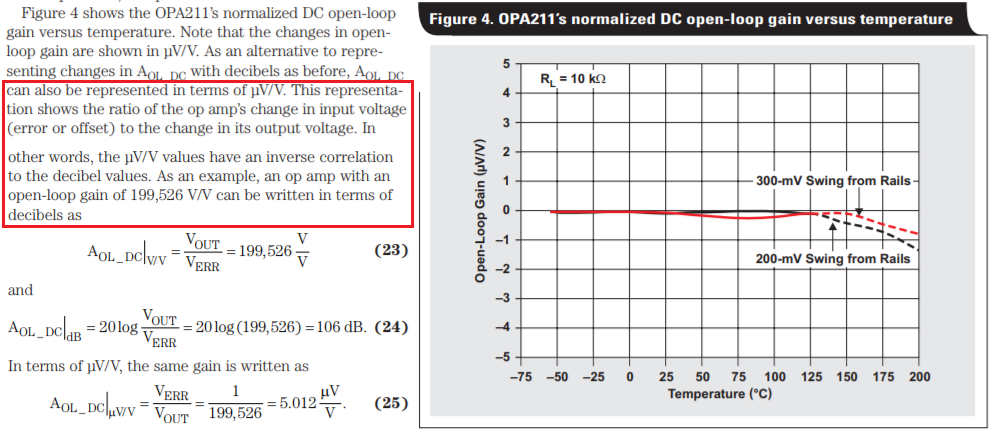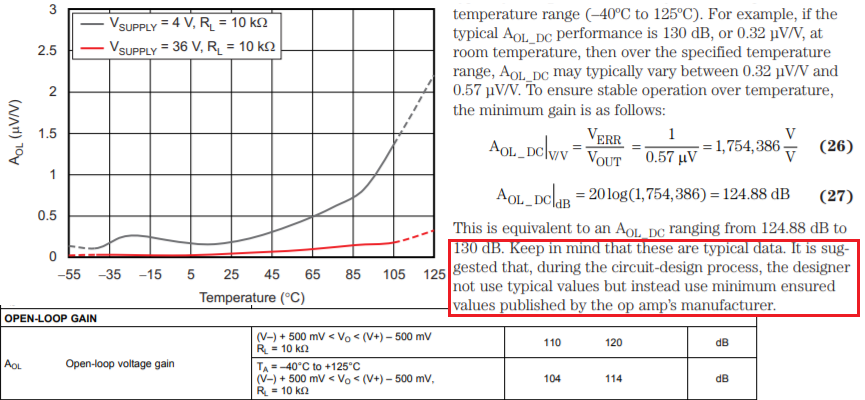Other Parts Discussed in Thread: OPA180, OPA4180,
Hi Team,
Good day,
We received a query from customer and they want to understand more about the open-loop gain vs temperature of the said device. For me to not miss any information, I will copy the query below.
"I am trying to understand what datasheet is saying in regards to open loop gain.
Refer datasheet: OPA180, OPA2180, OPA4180, SBOS584E –NOVEMBER 2011–REVISED JUNE 2018, Figure 8, Open-Lop Gain vs Temperature.
Firstly, does the Vertical axis have the correct units? Marked as "Aol (uV / V)", which seems incorrect.
I suspect the units should be "Volts per micro-Volt", ie: "V / uV", ie: 1million.
Is there any reason that the usual units of dB are not used here?
OK, now assuming the vertical axis should be marked "uV / V", then a higher value means higher open-loop gain. Looking at the case when Temperature = 25C, the trace (line) coloured grey (Vsupply=4V, RL = 10kohm) has higher gain than the red trace (Vsupply=36V, RL = 10kohm). It is really the case that open-loop gain is higher when supply voltage is lower? The difference is not negligible, according to the chart the different is a factor of 5 or 10, and gets wider as temperature increases."
Thank you and looking forward for your kind response.
Regards,
Maynard



